Outdoor playgrounds have continuously been a cherished space for individuals of all ages. From children to grown-ups, these dynamic areas are where imaginations run wild, creativity soars, and memories are made.
Research has shown that play contributes to a range of benefits, including improved motor skills, enhanced creativity, better problem-solving abilities, and increased social interaction.
As urbanization and technological advances have reduced opportunities for outdoor play, creating interactive outdoor playgrounds becomes increasingly vital in providing individuals with spaces for recreational and developmental activities.
Let us explore the importance of designing fun spaces for all ages:
1- The Importance of Outdoor Playgrounds
1.1 The Role of Play in Human Development
Play is a fundamental aspect of human development, particularly during childhood. It helps children learn about the world around them, develop social skills, and refine their physical abilities.
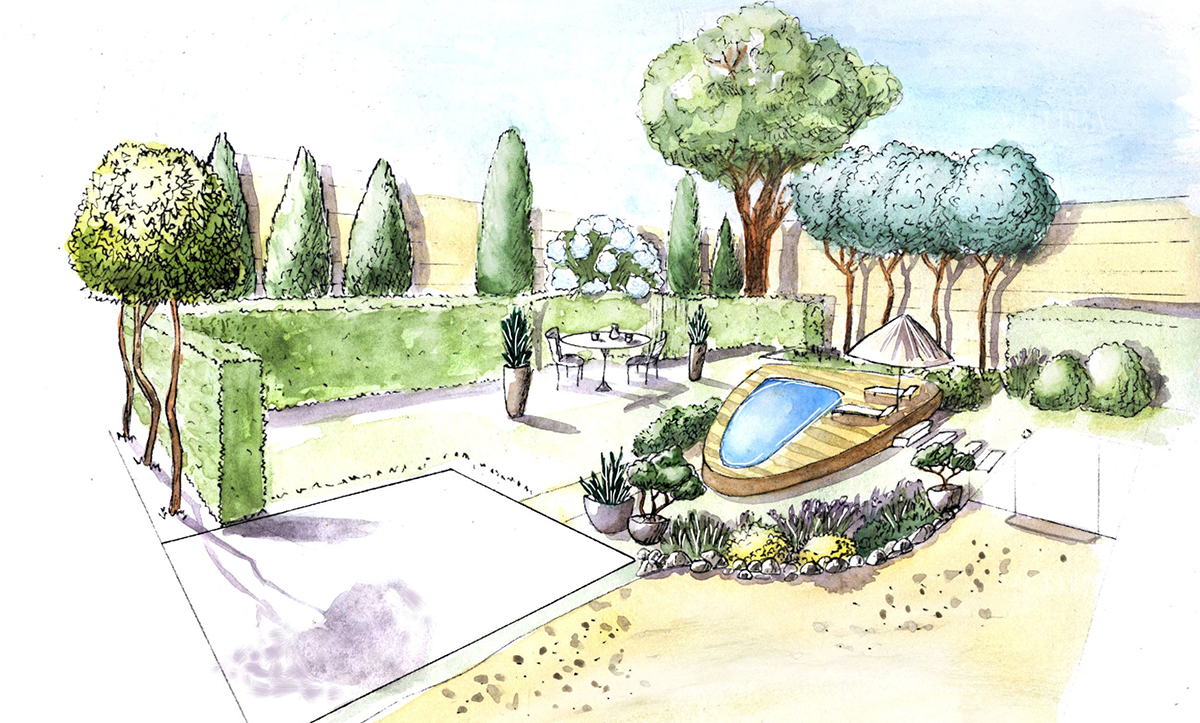
Additionally, play facilitates cognitive growth by encouraging curiosity, problem-solving, and imaginative thinking. However, the benefits of play extend beyond childhood, as adolescents and adults also experience improved well-being and reduced stress through recreational activities.
1.2 Benefits of Outdoor Playgrounds
Outdoor play environments provide unique advantages compared to indoor settings. Exposure to natural elements, such as sunlight and fresh air, contributes to physical health and mental well-being.
Outdoor playgrounds promote physical activity, leading to healthier lifestyles and reduced risks of obesity and related health issues. Furthermore, these spaces encourage social interaction, enabling individuals to form meaningful connections with peers and community members.

1.3 Challenges and Limitations
Designing interactive outdoor playgrounds comes with challenges, such as balancing safety measures with opportunities for risk-taking and ensuring accessibility for individuals with disabilities.

Additionally, funding and maintenance can pose obstacles to the sustainability of these spaces. Addressing these challenges requires careful planning, collaboration, and community involvement.
2- Principles of Designing Interactive Outdoor Playgrounds
2.1 Inclusivity and Accessibility
An essential principle of designing interactive outdoor playgrounds is ensuring inclusivity and accessibility for all individuals, regardless of age or ability.
Incorporating universally designed elements allows people with disabilities to participate in play activities alongside their peers, fostering a sense of belonging and promoting empathy and understanding.
2.2 Safety Measures and Risk-Benefit Analysis
Balancing safety measures with the need for challenging and stimulating play experiences is crucial. Implementing risk-benefit analysis helps identify potential hazards while recognizing the importance of allowing children and individuals to engage in age-appropriate risks, which support their development and confidence.
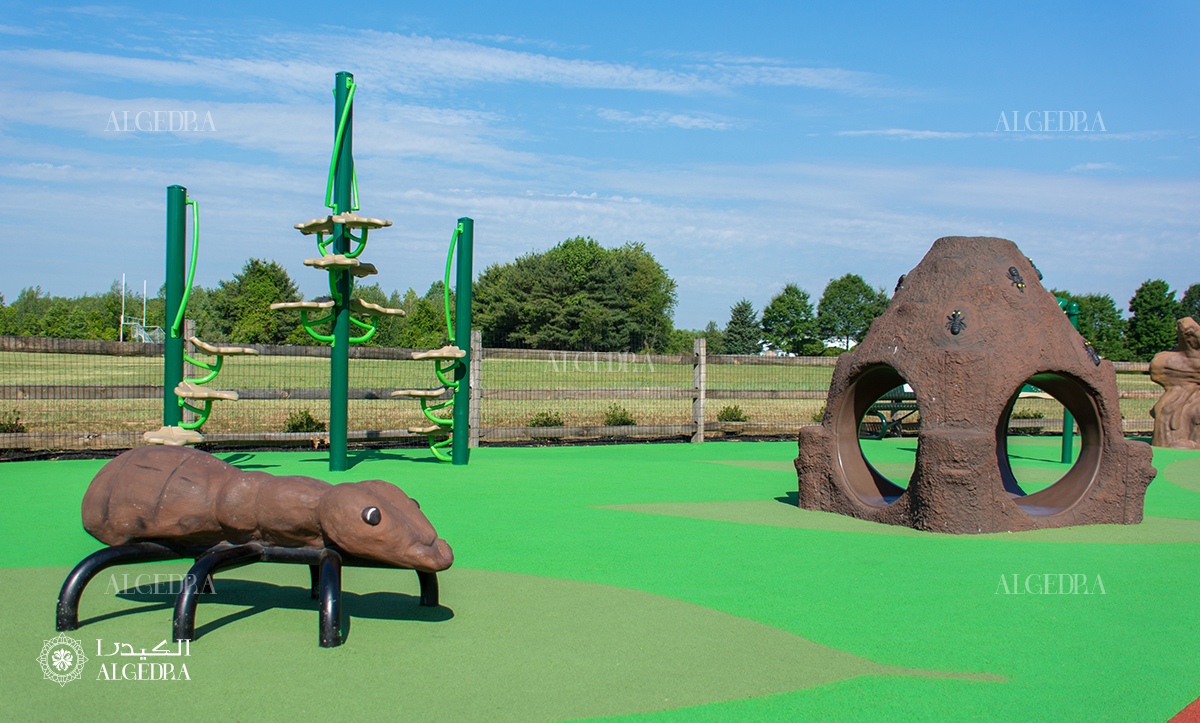
2.3 Incorporating Nature and Natural Elements
Integrating nature into playground design enhances the play experience. Elements such as trees, plants, natural water features, and sensory gardens provide opportunities for exploration, creativity, and a deeper connection to the environment.
2.4 Incorporating Sensory and Tactile Experiences
Designing interactive playgrounds with a focus on sensory and tactile experiences stimulates the senses, which is especially beneficial for individuals with sensory processing difficulties. Textured surfaces, scents, and interactive play panels can offer multisensory engagement.
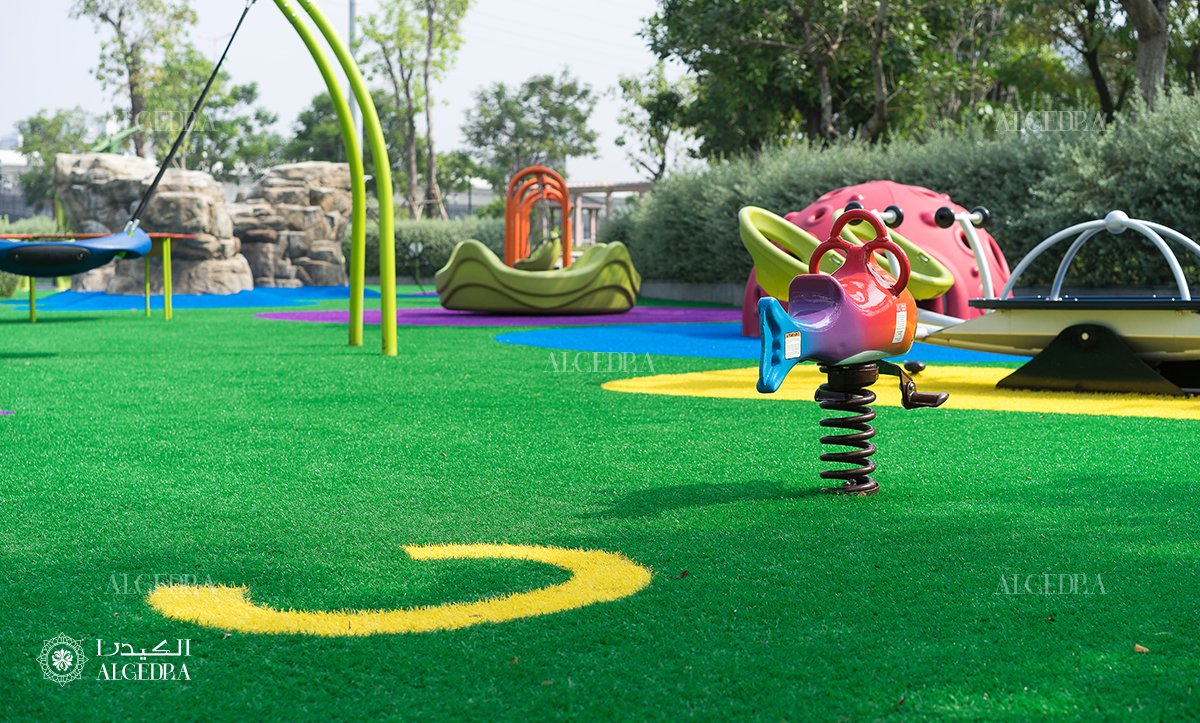
2.5 Integrating Art and Creativity
Incorporating art installations and creative elements into playground design encourages self-expression, imagination, and storytelling. Artistic play components can act as focal points for social interaction and collaboration among users.
2.6 Age-Appropriate Zones and Activities
Dividing playground areas into age-appropriate zones ensures that the play equipment and activities align with the developmental needs of different age groups. This approach allows children, adolescents, and adults to engage in activities suitable for their abilities and interests.
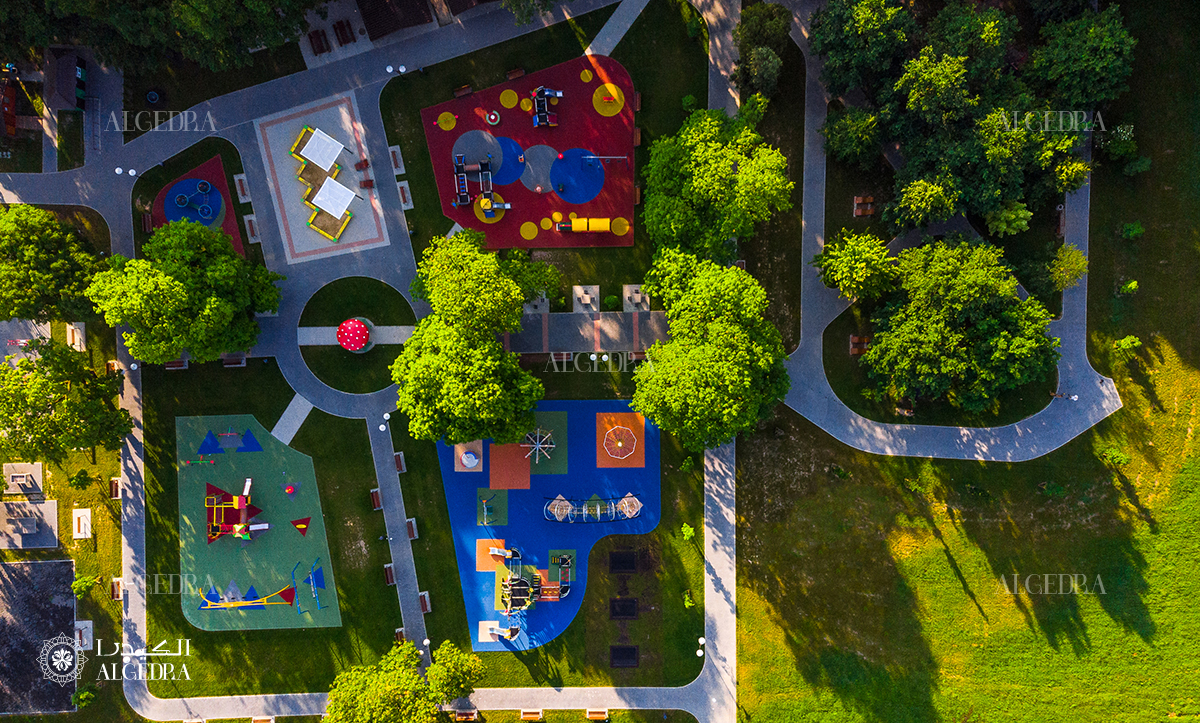
3- Innovative Design Elements for Interactive Playgrounds
3.1 Interactive Technology and Its Role in Play
Integrating interactive technology into outdoor playgrounds can elevate the play experience.
From interactive digital displays to interactive play panels, technology can engage users with dynamic and customizable activities. Augmented reality (AR) and virtual reality (VR) can transport users to imaginative worlds, promoting creativity and cognitive development.
3.2 Gamification and Augmented Reality
Gamification involves incorporating game-like elements, such as points, challenges, and rewards, into the play environment. This approach encourages individuals to participate actively and fosters healthy competition and motivation.

Augmented reality games, overlaying digital content onto the physical environment, can also create interesting and interactive play experiences.
3.3 Kinetic and Responsive Installations
Kinetic and responsive installations react to users' movements and actions, enhancing engagement and playfulness. Swings that generate music, seesaws that light up, and interactive floors that respond to footsteps are examples of kinetic and responsive elements that add a magical touch to the playground.
3.4 Dynamic Play Structures and Modular Design
Static play structures are giving way to dynamic and flexible designs that allow for customization and adaptability. Modular play equipment enables playgrounds to be reconfigured and updated over time, keeping the space fresh and appealing to different age groups.

3.5 Musical and Sound-Generating Elements
Incorporating musical instruments and sound-generating elements into playgrounds encourages auditory exploration and musical play. These components invite individuals to create melodies, collaborate in improvised performances, and appreciate the joy of music.
4- Enhancing Physical Activity and Cognitive Development
4.1 Promoting Physical Exercise and Movement
Interactive outdoor playgrounds should encourage physical activity to combat sedentary lifestyles. Combining traditional play equipment like slides and climbing structures with engaging and dynamic elements motivates individuals to be physically active, thus promoting overall health and well-being.
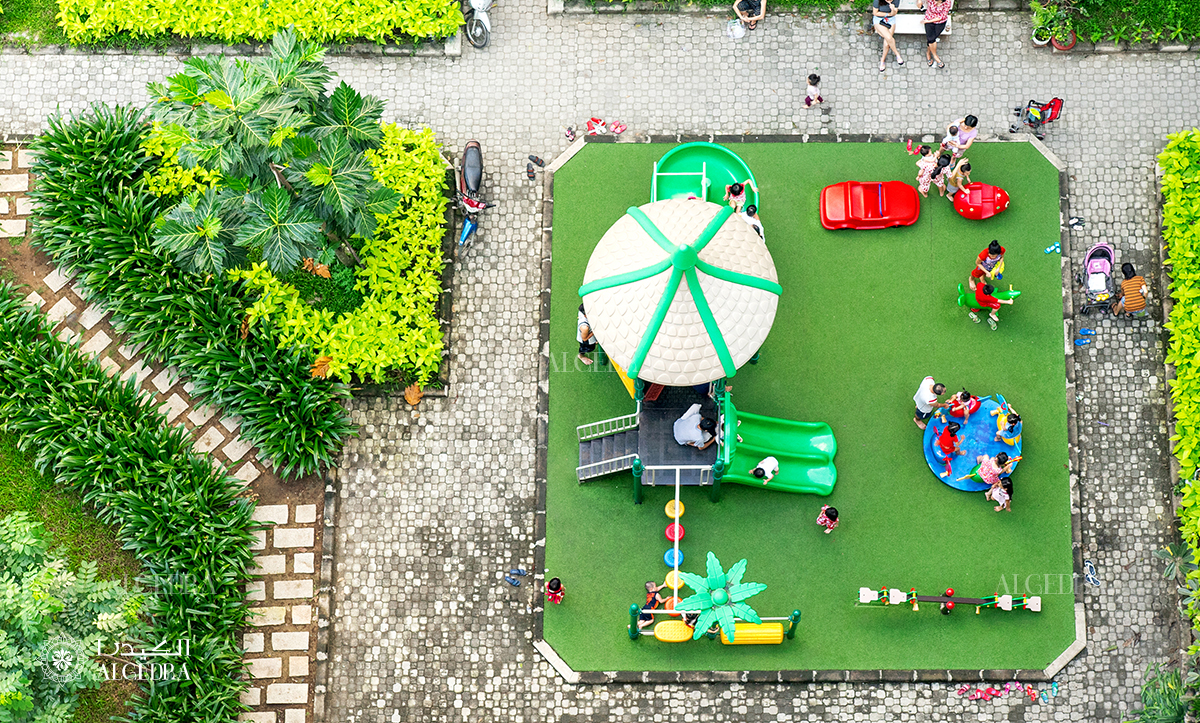
4.2 Cognitive Challenges and Problem-Solving
Designing play areas with puzzles, riddles, and interactive games challenges individuals' cognitive abilities, fostering problem-solving skills and critical thinking. These mentally stimulating activities contribute to cognitive development across all ages.
4.3 Stimulating Imagination and Creativity
Interactive outdoor playgrounds should spark the imagination and creativity of users. Play equipment and elements that allow for open-ended play, role-playing, and imaginative storytelling empower individuals to explore their creativity and develop their own narratives.
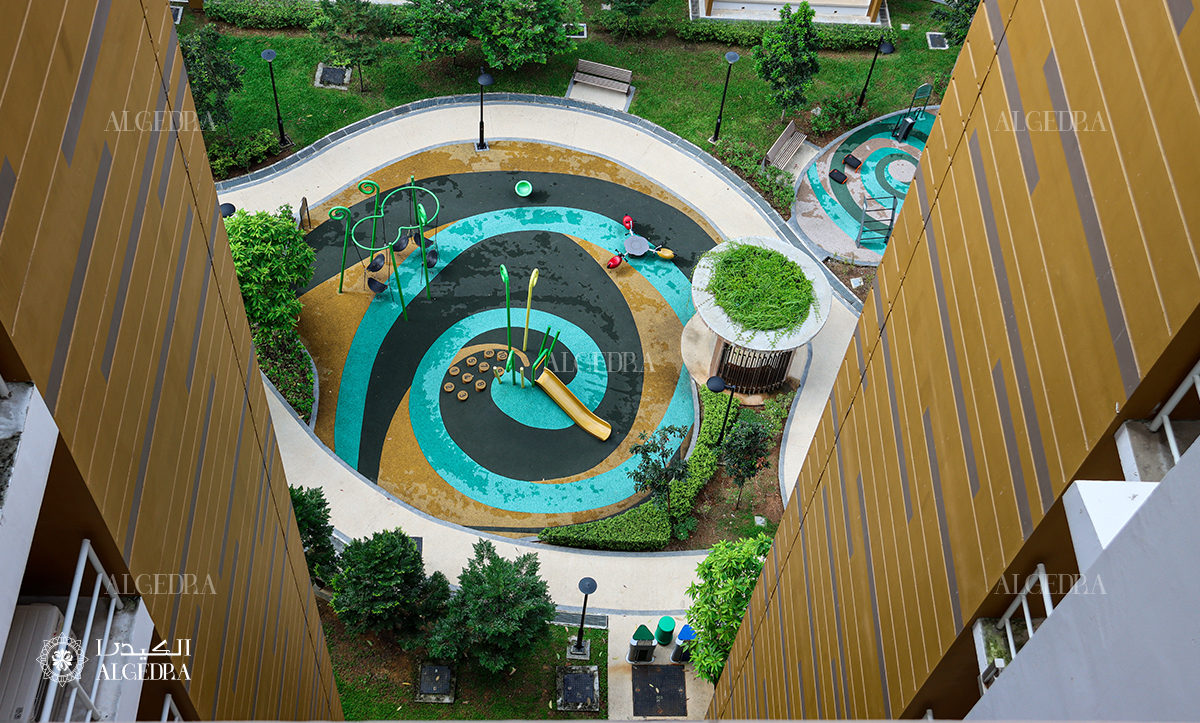
4.4 Encouraging Social Interaction and Communication
Playgrounds can be platforms for social interaction, enabling individuals to make friends and engage in cooperative play. Interactive play elements that require collaboration and teamwork promote effective communication and social skills.
4.5 Impact on Mental Health and Stress Reduction
Outdoor play in interactive playgrounds has been associated with stress reduction and improved mental well-being. The combination of physical activity, social engagement, and sensory experiences can act as a therapeutic outlet and contribute to overall mental health.

5- Designing for All Ages
5.1 Challenges of Multigenerational Play
Creating interactive outdoor playgrounds that cater to different age groups poses unique challenges. Designers must strike a balance between age-appropriate activities while still fostering opportunities for intergenerational play and interaction.
5.2 Playgrounds for Toddlers and Preschoolers
Spaces designed for toddlers and preschoolers should prioritize safety, with age-appropriate play equipment, cushioned surfaces, and secure fencing. Elements that promote sensory exploration and gross motor skill development are also essential for this age group.
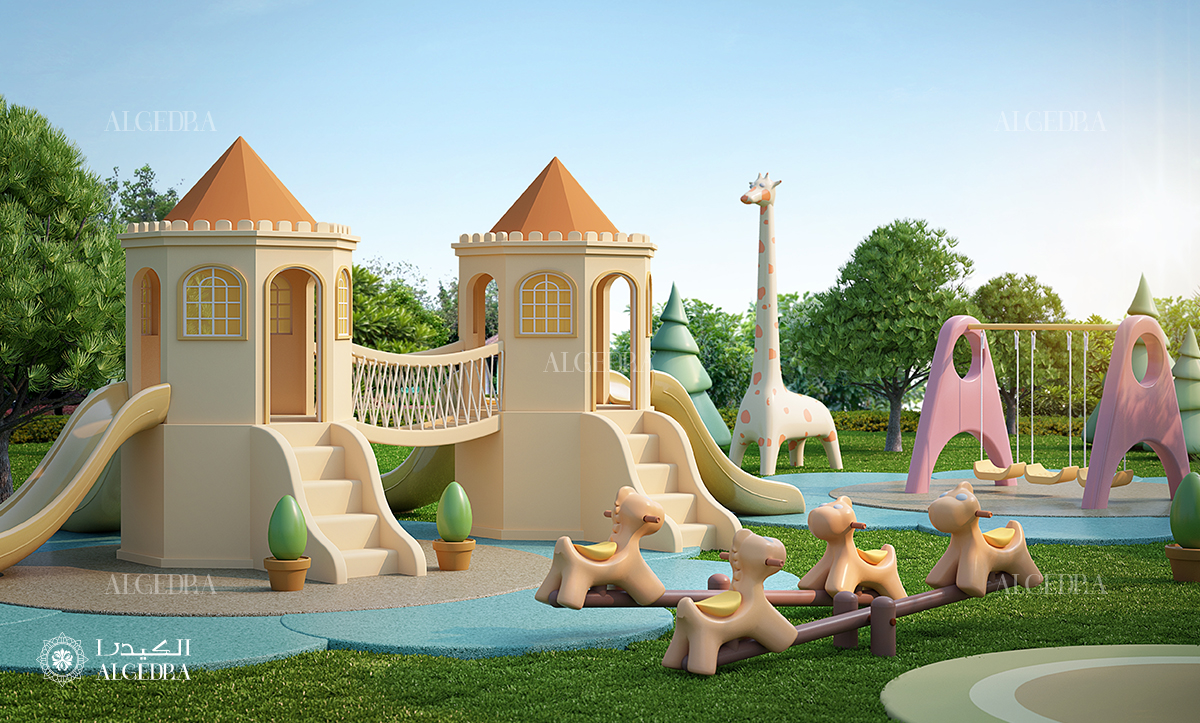
5.3 Playgrounds for Children and Adolescents
Children and adolescents benefit from interactive play structures that challenge their physical abilities and offer opportunities for imaginative play and social interaction. Incorporating areas for sports, creative arts, and interactive technology helps cater to their diverse interests.
5.4 Playgrounds for Teens and Young Adults
Teenagers and young adults require spaces that respect their desire for independence and autonomy. Providing spaces for informal social gatherings, activities that support self-expression, and opportunities for challenge and risk-taking is essential for this age group.
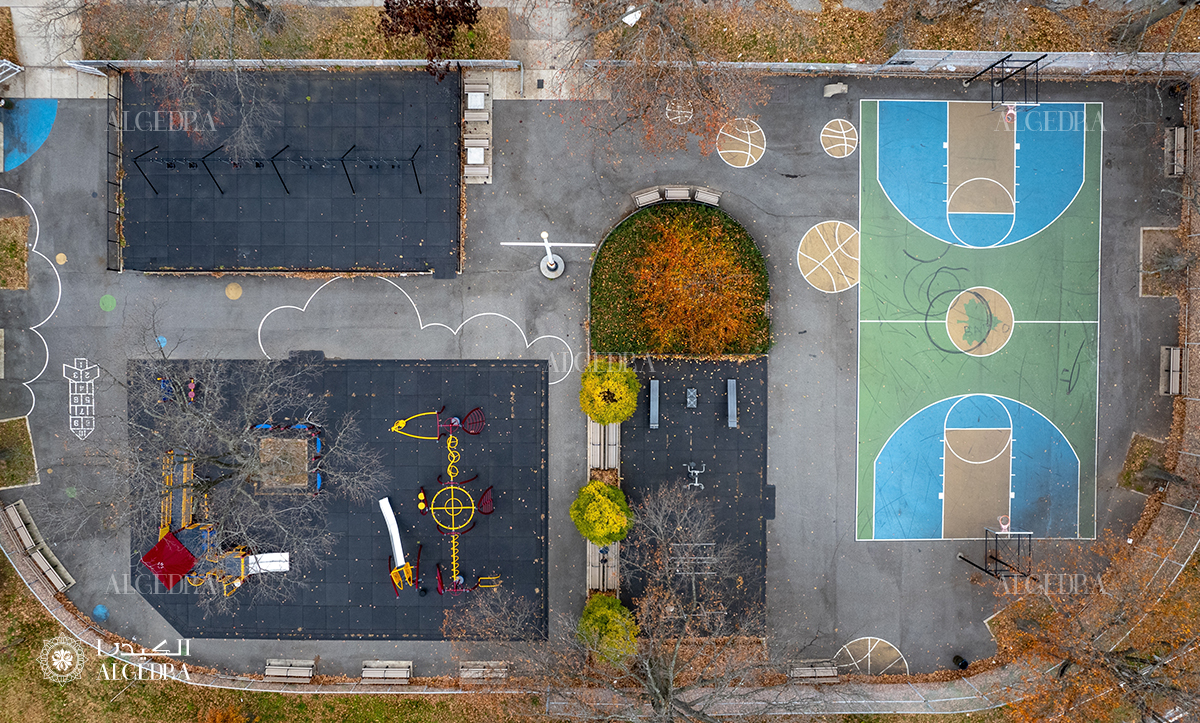
5.5 Playgrounds for Seniors
Designing interactive outdoor spaces that accommodate seniors can contribute to their overall well-being and foster a sense of community. These spaces should be age-friendly, with elements that promote balance, flexibility, and cognitive stimulation.
Algedra is a leading design company, and here to help you with the design process.